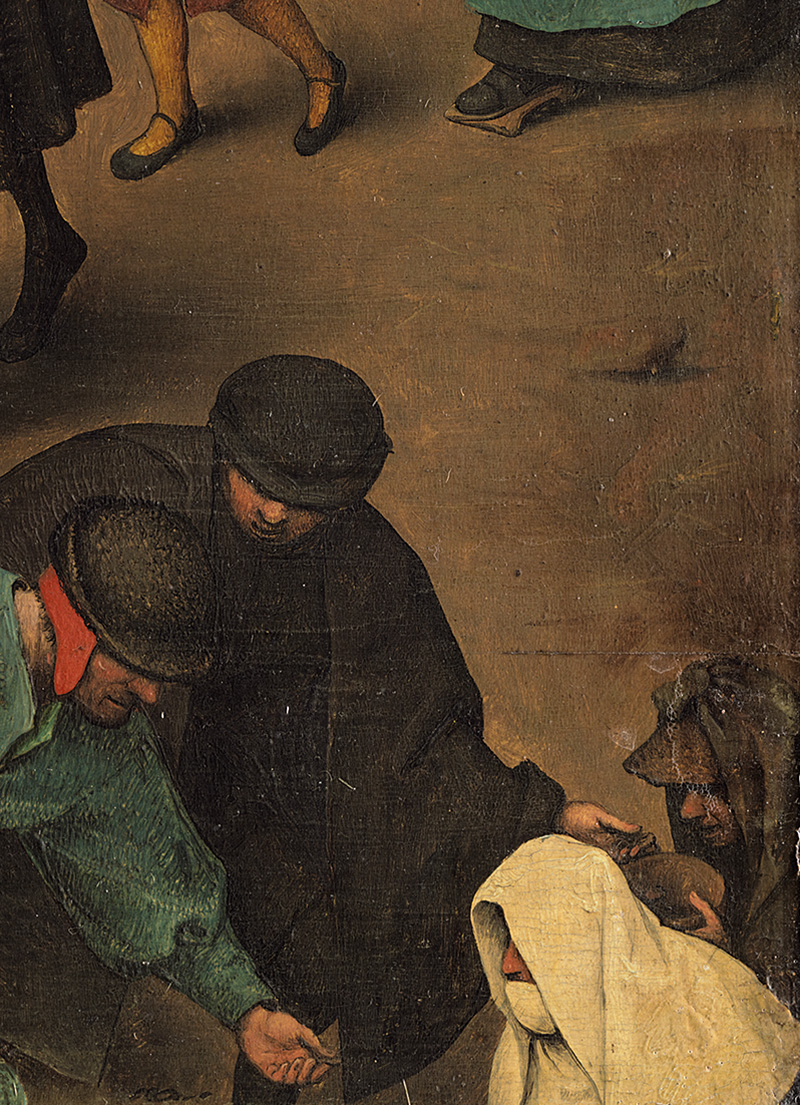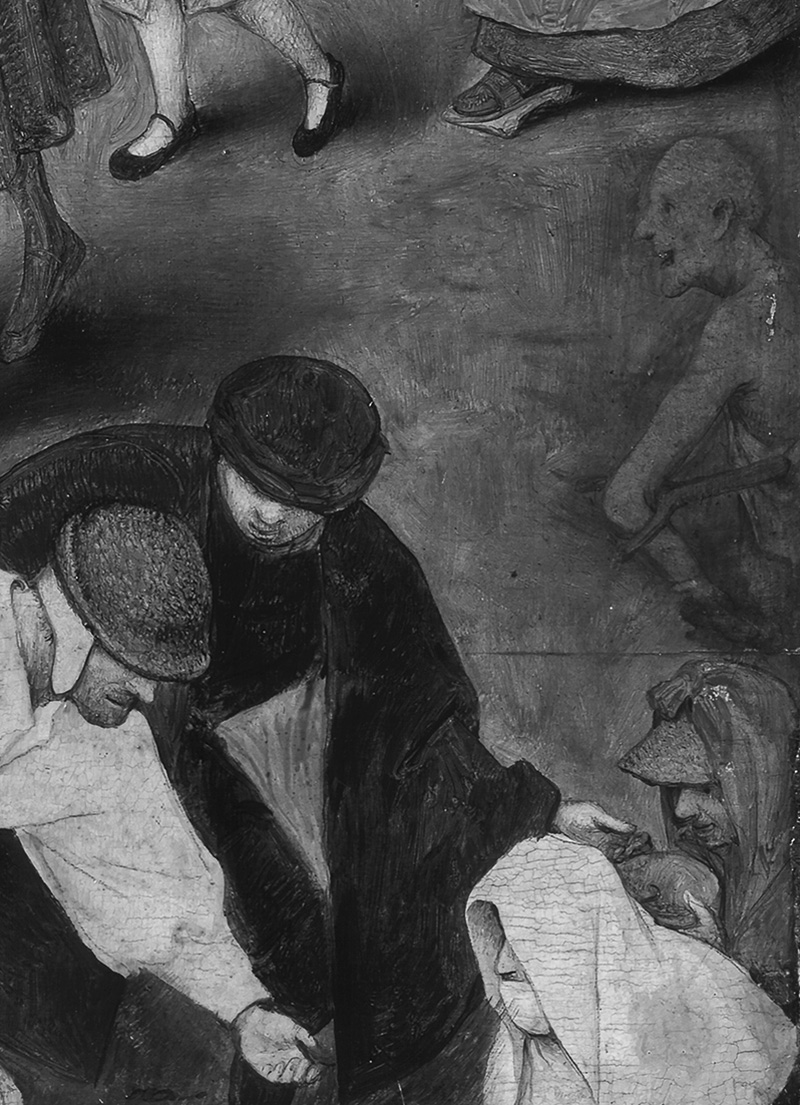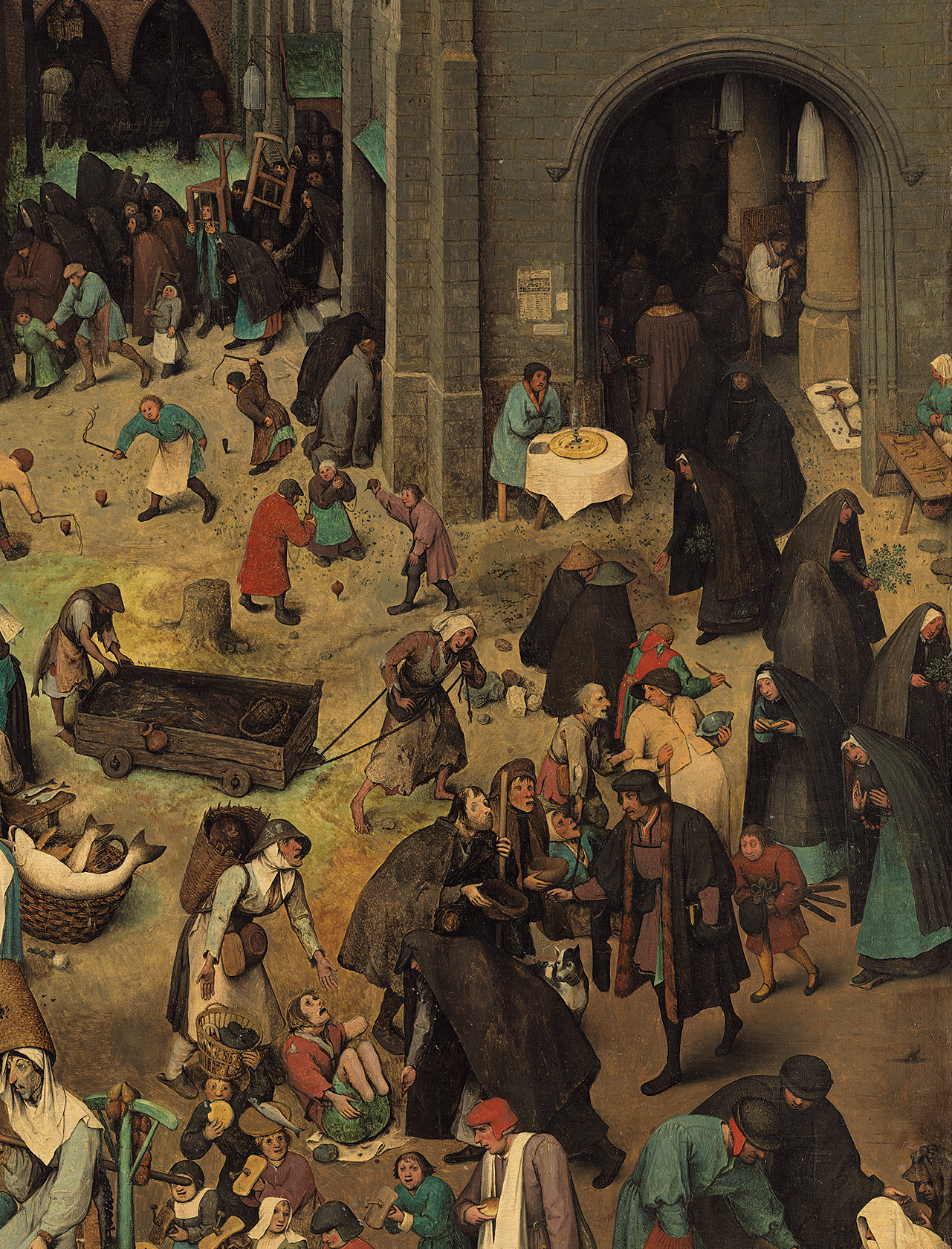Carnival vs. Lent
Bruegel does not mince matters. The Battle between Carnival and Lent is an excellent example.
The Battle between Carnival and Lent1
Bruegel as a social critic
Pieter Bruegel the Elder was an astute observer and social critic. He was much admired for his skills - despite the fact that he was holding up a mirror to his contemporaries.
Bruegel does not mince matters. A good example is one of his earliest panel paintings in the Kunsthistorisches Museum: The Battle Between Carnival and Lent from 1559.
This is one of Bruegel’s Wimmelbilder: busy pictures. The large composition is teeming with countless figures seen from above. The elevated viewpoint allows us to see all the events and activities taking place simultaneously on the main square of a small town.
Bruegel depicts contemporary Flemish customs of Carnival and Lent in loving detail. The exhibition includes a number of objects similar to the ones shown in the painting. We are very grateful to our colleagues at the Museum Boijmans Van Beuningen in Rotterdam and at the Open Air Museum Bokrijk in Genk, who identified suitable objects in Belgian and Dutch collections.
We were therefore able to include in the exhibition loans from the Museum Boijmans v.B. that will be displayed next to Bruegel’s The Battle between Carnival and Lent.
All the action takes place between the inn and the church. The left is dominated by the inn and Prince Carnival, personified by a stout drunkard. On the right are the church and Lady Lent, head to toe in grey.
The two antagonists are armed and about to break a lance with each other. Of course, this is not a real joust. Prince Carnival is brandishing a roasting spit loaded with various kinds of meat, while Lady Lent is attacking him with a bread peel full of herrings.
It is all an act, on both sides of the composition and by members of all classes alike: the greedy (sham) cripples as much as the hypocritical rich burghers who reduce faith to customs such as Lent and public displays of charity. They all are competing for their own advantage.
Pieter Bruegel the Elder
The Battle between Carnival and Lent
1559 // Signed and dated in the lower right corner: BRVEGEL 1559 // Oak panel, 118 × 164.2 cm // Vienna, Kunsthistorisches Museum, Picture Gallery, inv. no. 1016
There is a lot going on in this teeming composition apart from the two main protagonists, and even below the visible paint layers. Modern technology allows us to see through the different paint layers and study the underdrawing.
Infrared reflectography is particularly useful here: these infrared images reveal both that Bruegel produced detailed preliminary drawings of all the figures, and that he overpainted some areas of the composition.
It is likely that these scenes had been considered too macabre by the painting’s owners.
The many extant copies of this painting alerted scholars to these overpaintings: some show figures that were later painted over in the original.


All these painted-over figures emphasize one of Bruegel’s seminal messages: affliction, disability, suffering and even the deceased are used to make money.

A careful look at the church reveals that the poor are exiting the church through the side entrance. The well-to-do use the main entrance, where expectant beggars are jockeying for the best places. (Sham) cripples have taken up strategic positions.
With a flourish, a female pilgrim is simultaneously pointing to the cripple at her feet, pocketing alms and turning her attention to the next potential almsgiver.
Perhaps Bruegel’s paintings continue to get ’under our skin’ because his perceptive observations and keen social critique continue to be highly relevant today?
